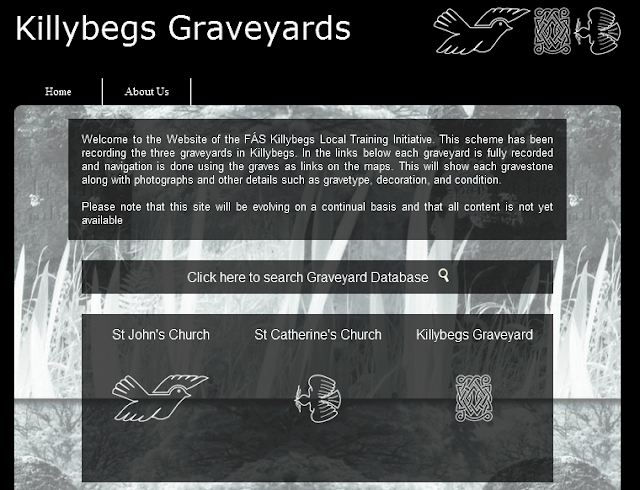 |
| George Blain 1721 |
In recent years the rise in popularity of genealogy and
researching the family tree has focused attention on the importance gravestone
inscriptions as a rich genealogical resource.
However gravestones can tell much more than the name of a
person, what age they were and when they died.
A closer look at gravestones can reveal the vast array of symbols
intricately carved and their meanings are often obscure to modern society.
In a predominately illiterate society symbols were used to
convey meaning and ideas. As literacy levels increased the use of symbols
became less important.
Symbolism on gravestones can take a number of forms. The most common type is religious and the
themes of these are primarily with mortality and immortality. Secular symbols also appear regularly and
these can take many forms such as the occupation of the person or personal
messages from the deceased person’s family.
Family crests also appear on gravestones.
The craving of these symbols are often very beautiful and
can be done either by a skilled master stone mason using strict classical
proportions or they can be done by a local ‘handyman’ and represent a very
local form of vernacular or folk art.
In this context gravestones and graveyards should be seen as
local art galleries representing the changing artistic tastes of a community
over many generations.
The use of these symbols gives us and insight into the
beliefs of a community and their outlook on life and death during a particular
period and how these beliefs evolved over the intervening centuries.
The earliest of the Blain gravestones in St Catherine’s Church and graveyard is that of George Blain who died in 1721. The Blain family have been in the Killybegs area for over three hundred and fifty years. The grave itself is barely visible and has partially slipped under another Blain gravestone dating from 1777.
George Blain was probably an important man in Killybegs
during the period of his life. He is a
signatory to a bond signed in 1713 and appears in a number of rent rolls up
until his death. After his death his
wife appears in the rent rolls as simply “Widow Blain” and the last record we
found of her was in 1749, 28 years after his death.
The gravestone is quite elaborate for its time and again
this shows he must have been quite a wealthy individual. The grave slab measures approximately 1.68m
long by 0.8m wide. It has a series of
rolls along the perimeter with extensive craving on most of the gravestone and
the inscription is squeezed in on the right hand side of the slab and feels
almost secondary to the carving. The
slab is broken in a number of places but thankfully it is still in-situ.
 |
| George Blain's Grave as drawing on Google Sketch-up |
- Coffin symbolizes Mortality
- Arches represent triumph, an example of this would be the Arc de Triumph in Paris. In this case the arches represent the triumph of the soul over death.
- Spirals symbolizes Eternity
- Heart symbolizes Love, an upside down represents the pain and broken heart of the family.
- Arrows symbolizes mortality, martyrdom, departure, pain and sorrow. point of death
The symbols on this gravestone suggest that it could be a personal message from his family. If you put the symbols together you could read the gravestone as follows "Although the mortal body of George Blain passed away on death, his soul has triumphed over death and the love of his family although broken-hearted will continue forever"
Online References:
Guide To Gravestone Carvings by William E.
Wolsey
Rochester's History ~ An Illustrated Timeline -Glossary Of Victorian Cemetery
Symbolism
Scottish Graveyards
Save a grave
Gravestone Symbolism
Headboards Of Stone - A Mississippi Graveyard Rabbit Blog
Gravestone studies
References:
Stories in Stone written by Douglas Keister (2004) published by Gibbs Smith
A Scottish Graveyard Miscellany written by Hamish Brown (2008) published by Birlinn Limited
Gravestones Tombs & Memorials written by Trevor Yorke (2010) published by Countryside Books
















